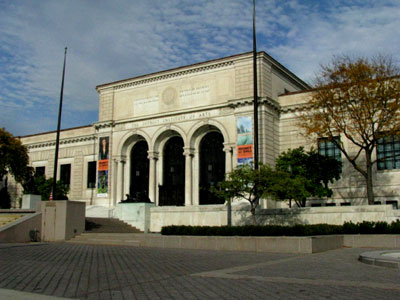On my second day in Detroit I got a great start to the day with a scrumptious breakfast at the just reopened Westin Book Cadillac Hotel: a strawberry waffle with whipped cream. That’s one menu item I can’t resist. I was enjoying the sleek décor and pleasant ambience of the Boulevard Room restaurant of this historic hotel which has just been restored to glory after being shuttered for 24 years.

A delicious waffle breakfast at the Westin Book Cadillac Hotel
Shortly after 8 am I was joined by Bob Goldsmith of Detroit Tour Connections who was about to take me on an architectural walking tour of Detroit. Bob is a Detroit native and a true enthusiast of the Motor City. In addition to his full-time profession as a lawyer, Bob dedicates his time to providing scheduled weekend walking tours, regular Wednesday walks as well as customized walking and bus tours for groups. Many of his tours are centered around specific themes, such as downtown churches, historic hotels, cool bars, places with unique art etc. His bus tours focus on such topics as Detroit’s ethnic enclaves, the city’s sports history, or the recent revitalization that has been taking place in Detroit.

Bob Goldsmith at a stop at the Pure Detroit retail store
To admire some of Detroit’s outstanding architecture we did not have to go far since the intersection of Washington Boulevard and Michigan Avenue offers a great view of many historic buildings. To the north of the hotel are the 13-story Book Building from 1917 and the 36-story Book Tower from 1926, which were both designed by famous Detroit architect Louis Kamper.

The famous Penobscot Building
The 47-story Penobscot Building was Detroit’s highest building until the construction of the Renaissance Centre in 1977. Designed by renowned architect Wirt Rowland and opened in 1928, it features an H-shaped design to allow light into the offices. The Penobscott Building is connected to two earlier Penobscot Buildings dating to 1905 and 1916 with a shared lobby and shared access to restaurants and various stories on the lower levels. Looking east of Michigan Avenue we got a great view of this famous setback skyscraper which also was an inspiration for the Empire State Building, opened three years later and built by many of the same construction workers that also worked on the Penobscot.

A look at the historic Book Tower from the Westin Book Cadillac Hotel
Walking down on Washington Boulevard, we had a good look at some of Detroit’s architectural landmarks: the 1923 Lafayette Building sits east at the intersection of Lafayette and Washington and has been empty for many years. A building next to the Lafayette Building holds two famous Detroit landmarks: the Lafayette Coney Island and the American Coney Island, both offering Coney Island style hotdogs. In Detroit and other parts of Michigan, the term “Coney Island” is not only used for the hot dog but also for the diner-like food establishments that serve this popular food.

Another look at the setbacks of the Penobscot
We walked by the austere Federal Court Building, or more properly named the Theodore Levin United States Courthouse, a sleek moderne style structure which sits next to the Detroit Free Press Building, an Art Deco design by Albert Kahn which opened in 1925. Then we headed east on Griswold Street where we admired the imposing entrance of the Penobscot Building.

A classicist bank building in the Financial District
On the other side of the Street is the Guardian Building, originally called the Union Trust Building, one of the most stunning examples of Art Deco design. Featuring abundant Aztec-style decoration, amazing mosaic and tilework, this 1929 masterpiece used to be referred to as the “Cathedral of Finance”.

The magnificent Guardian Building
The exterior domes of the Guardian Building feature decorations made by the famous Pewabic Pottery Company, and tile, limestone and terra cotta adorn the outside brickwork which consists of 1.8 million red bricks, an unusual cladding material for a skyscraper. The granite base features carvings by renowned architectural sculptor Corrado Parducci whose magnificent work also adorns the Buhl Building, the Penobscot Building, the Masonic Temple and many other landmarks in Detroit.

Sculptural details by Carrado Parducci
The interior of the Guardian Building is stunning, particularly the former banking hall with its three story vaulted ceiling adorned by multi-colour Aztec ornamentation and Rockwood pottery. The building is accented by different types of marble, and for the particularly rare Numidian marble architect Wirt Rowland went to Africa to reopen a quarry that had been closed for 30 years.

The lobby of the Guardian Building




